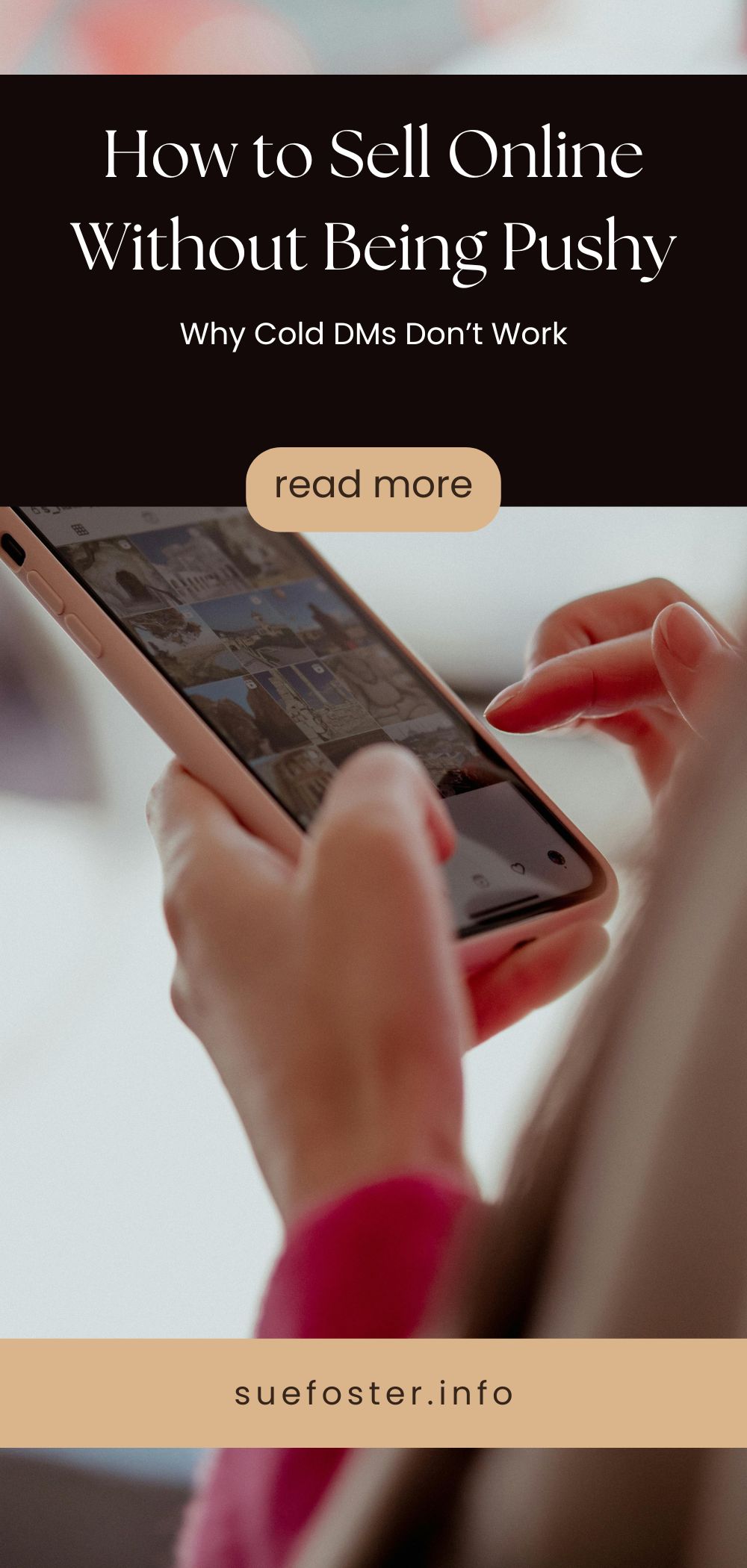If you’ve spent any time on social media lately, you’ve probably had one of those messages land in your inbox, the kind that starts friendly enough but quickly turns into a sales pitch. I get them all the time. A cheery “Hi, lovely!” followed by a long paragraph about a business opportunity, or a copy-and-paste message that’s clearly been sent to dozens of people.
Honestly? I’m sick of it. The moment I see that notification, I know what’s coming. It’s not a genuine hello, it’s a pitch in disguise. And I’m not the only one who feels that way. Most people scroll past or delete those messages without even replying.
Cold DMs (direct messages) might have worked a few years ago, but they just don’t sit right anymore. The online world has changed. People want connection, not cold calls in their inbox.
So how do you sell your products or services without sounding pushy or fake? Let’s talk about better ways to do it and approaches that build trust and lead to genuine sales.
Let Your Content Do the Talking
Instead of chasing people in their messages, make your content show what you offer and why it’s valuable. Share short tips, quick wins, or behind-the-scenes posts that show you actually know your stuff.
If you sell digital products, post snippets from your guides or templates. If you’re an affiliate, talk about how a product genuinely helped you. When your content is helpful, people naturally start to trust you, and they’ll click your links because they want to, not because you cornered them in their DMs.
Think of your posts as little conversations happening in public. You’re showing what you do, not begging for attention.
Focus on Relationships, Not Transactions
The best sales often come from people who’ve followed you for a while, those who’ve read your blog posts, seen your updates, and felt like they know you. That kind of trust can’t be rushed.
Spend time replying to comments, joining discussions, or just being part of your online community. When people start seeing you as a real person, they’ll be more open to what you offer.
Instead of sending ten cold messages, try building ten warm connections through your posts, stories, or even emails. You’ll get much further.
Stop Copy-Pasting Sales Pitches
This one seems obvious, but it’s still happening everywhere. The second someone follows, they get a pasted paragraph about an opportunity or a course. It doesn’t feel human, and it’s a quick way to lose trust.
You can absolutely reach out to people, but make it personal and relevant. If someone has commented on your post about blogging, for example, a simple reply or thank you is enough. Let the conversation grow naturally.
A good rule of thumb: if you wouldn’t say it face-to-face, don’t send it as a DM.
Use Smarter Tools Instead of Cold DMs
If you want to reach followers directly, use tools that invite people to hear from you, rather than forcing it.
For example, use ManyChat, which lets you send messages to people who’ve shown genuine interest, for instance, when they comment a specific word you’ve asked them to use on your post. This way, they choose to hear from you, and you can share your free resources or product links with people who actually want them
It’s a completely different experience. You’re not intruding into anyone’s inbox; You’re responding to their interest. It saves time, keeps things compliant, and feels respectful, for both sides.
If you’ve been hesitant about automation, this is one tool that actually makes sense. It allows you to nurture the right audience, rather than chasing strangers.
Make Your Profile Clear and Inviting
Sometimes the problem isn’t what we send, it’s what people see when they visit our page. If your profile doesn’t clearly say what you do, they won’t know why they should care.
Have a short bio that explains what you offer and who it helps. Add one link where people can find your main resources (your blog, shop, or freebie). If you use Instagram or TikTok, use your bio link wisely, keep it neat and simple.
Your profile should do the selling quietly, even when you’re offline.
Be Transparent About What You’re Offering
There’s nothing wrong with selling; we all have something worth sharing. The problem is when it’s hidden behind fake friendliness or exaggerated promises.
If you’re upfront about what you do, “I help people start side hustles,” “I sell digital planners,” “I write guides for beginners”, people respect that honesty. You’re not pretending to be a friend just to get a sale. You’re showing up as someone who provides value.
That transparency is what sets apart ethical sellers from the copy-paste spammers.
Create Helpful Resources People Actually Want
If you want to sell more naturally, offer something genuinely useful before expecting people to buy. That could be a free checklist, a mini guide, or a short email series that solves a real problem.
When someone downloads a freebie and finds it helpful, they’ll remember you. Then, when you release a paid product, they’re already halfway to saying yes.
This method works far better than DMs ever will, because it’s based on trust and proof, not pressure.
My Advice for You
I know how tempting it can be to try every “growth hack” you see online. But if you’ve ever felt that cringe when another cold DM pops up, you already know deep down that’s not how you want to sell.
The truth is, the best online sales don’t come from pestering people. They come from being useful, honest, and visible.
Let your content show your expertise, use automation tools the right way (like ManyChat), and treat your audience like real people, because they are.
When you sell with respect, your audience listens. And that’s how you build something that lasts.
Pin Me!


